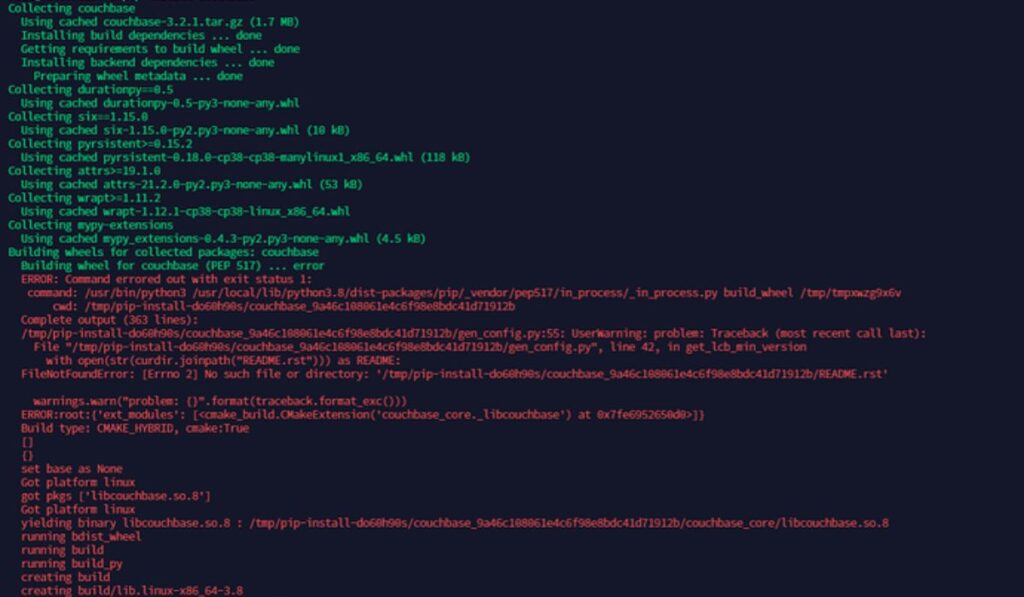When working with Python, especially in environments that rely on package management and installation like pip, you may encounter the error subprocess-exited-with-error. This error can be frustrating, particularly when it interrupts your workflow or delays your project. This article will explore the error: subprocess-exited-with-error causes, implications, and potential solutions to this error.
What is the subprocess-exited-with-error?
The subprocess-exited-with-error is an error message that occurs when a subprocess (a secondary process started by the main process) in Python exits unexpectedly or with an error code. This error often arises during the execution of commands that involve installing packages, building wheels, or running scripts where Python calls a subprocess to handle specific tasks.
Common Causes of the Error
1. Installation Issues
One of the most common scenarios where this error occurs is during package installation using pip. When pip tries to install a package, it may need to compile code, especially for packages that contain C extensions. If the compilation fails due to missing dependencies, incorrect configurations, or incompatible compilers, the subprocess that handles the compilation may exit with an error, triggering the subprocess-exited-with-error.
2. Missing Dependencies
Dependencies are crucial for many Python packages. If the required system-level libraries or other Python modules are missing, the subprocess responsible for checking and installing these dependencies might fail, leading to the error. This is common when working with packages that rely on system-specific tools like gcc or make.
3. Incorrect or Incompatible Versions
Running outdated or incompatible versions of Python, pip, or other tools can also cause this error. For instance, attempting to install a package that requires a newer version error: subprocess-exited-with-error of Python than what is currently installed can result in a failed subprocess.
4. Environment-Specific Problems
Certain environments, such as virtual environments, Docker containers, or Conda environments, may have specific configurations or restrictions that could lead to subprocess errors. For example, a lack of necessary permissions in a Docker container might cause a subprocess to fail.
Troubleshooting and Solutions
1. Check Dependencies
Ensure that all the necessary dependencies are installed on your system. For packages that require compilation, make sure that compilers like gcc are correctly installed and accessible. You can usually find the required dependencies in the package documentation.
2. Update Tools
Updating Python, pip, and other related tools to their latest versions can often resolve compatibility issues. Use the following commands to update pip and Python:
bashCopy codepip install --upgrade pip
Make sure your Python version is compatible with the packages you are trying to install.
3. Use Precompiled Binaries
If the error occurs during package installation due to compilation issues, consider using precompiled binaries, which are often available for popular packages. These binaries are easier to install and do not require compilation, thus avoiding potential subprocess errors.
4. Consult Logs for Specific Errors
The error message subprocess-exited-with-error may be generic, but the detailed logs that accompany it can provide specific clues about what went wrong. Look at the error trace to identify the subprocess that failed and investigate the cause. This may involve looking for missing libraries, permissions issues, or other environment-specific problems.
5. Isolate the Problem in a Virtual Environment
If you encounter the error in a complex environment, try to isolate the problem by creating a fresh virtual environment. This can help you determine whether the issue is related to the environment itself or the specific package or command.
bashCopy codepython -m venv myenv
source myenv/bin/activate
Install the package or run the command within this new environment to see if the error persists.
Also Read: https://crispme.co.uk/an-in-depth-look-at-ella-baila-sola-lyrics/
Conclusion
The subprocess-exited-with-error is a common but manageable error that often arises due to issues with dependencies, configurations, or environment settings. By understanding the root causes and following systematic troubleshooting steps, you can resolve this error and continue your work without significant disruption. Regularly updating your tools and maintaining a clean environment can also help prevent this error from occurring in the future.







